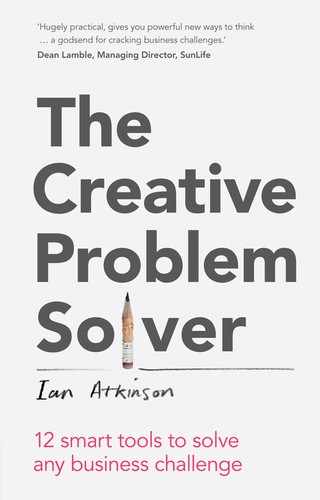INSIGHT
‘If you only have a hammer, you see every problem as a nail.’
ABRAHAM MASLOW
I was catching a train, so I parked in the station car park I’d used a hundred times before. I called the pay by phone service … to discover it wasn’t working. Luckily, my ashtray had enough change to feed the meter. As I got to the meter, another man was standing there, typing the phone number written on the meter into his smartphone. He’d just had a conversation with someone walking away, who I think had told him it wasn’t working.
‘The pay by phone isn’t working,’ I also told him. ‘It’s not recognising the location number.’
‘I haven’t got any choice,’ he replied grumpily. ‘I don’t have enough change.’
It’s stayed with me, that very brief conversation with a stranger. He knew the phone option wasn’t working. But he didn’t have enough change to pay by cash. So he ‘had’ to use the phone option … even though he knew it wasn’t working. I found it quite unnerving, his bizarre bloody-mindedness. I have the resources for Option A, but it doesn’t work. Option B is working, but I don’t have the resources for it. Err … Go back to Option A.
Afterwards, I realised his reaction wasn’t unique. In business, it’s a mindset you might have come across before. ‘Option A isn’t working, but we don’t have the resources to try Option B. So … let’s stick with Option A.’
It’s crazy, of course it is. What we should be doing is brainstorming how to get the resources for Option B. Or how to fix Option A. Or – and this can be the interesting bit – what Options C, D, E, F, G and H might be. But to do that we need to fix our thinking and stop being so narrow-minded and process driven.
As I mentioned in the introduction, I have a degree in psychology – but I’m no psychologist. Or neuroscientist. Or brain surgeon (clearly). So if you really want to know more about the way our brains work then I’d heartily recommend Thinking, Fast and Slow by Daniel Kahneman, Emotional Intelligence by Daniel Goleman and The Tell-Tale Brain by V. S. Ramachandran.
I can also recommend Decoded by Phil Barden, The Decisive Moment by Jonah Lehrer and Incognito by David Eagleman. All utterly compelling and convincing insights into how our brains work without lots of dreary talk of axons and dendrites. (Full details of these works and of other recommended reading are given at the end of the book.)
But here we’re just interested in getting a little background into how the brain solves problems – so that we can play to its strengths and be aware of its weaknesses. Doing so also gives us some context as to why certain corporate approaches to problem solving can be pretty ineffectual.
Of course, if you’re not fussed about the theory of why creative thinking tools work and you just want to get straight to using them, then please skip ahead to Part II, Innovation (it starts on page 13).
But just before you do, let me ask if you’ve ever tried this childish trick.
Ask someone what ‘s, i, l, k’ spells. Then ask them to say ‘silk’ three times. Then ask them what cows drink. Most people will quickly say ‘milk’. At which point, after a dramatic pause, you point out that no, cows drink water.
See how easy it is to fool our brains? Perhaps you’d better read on.
